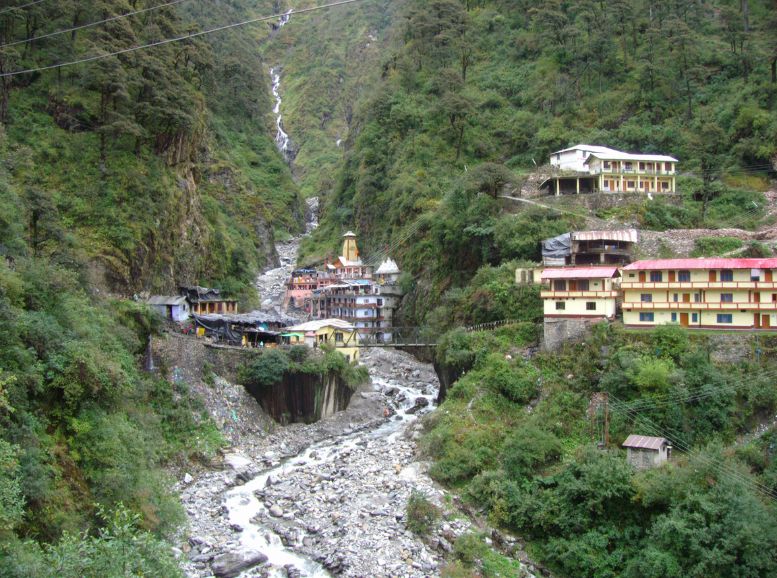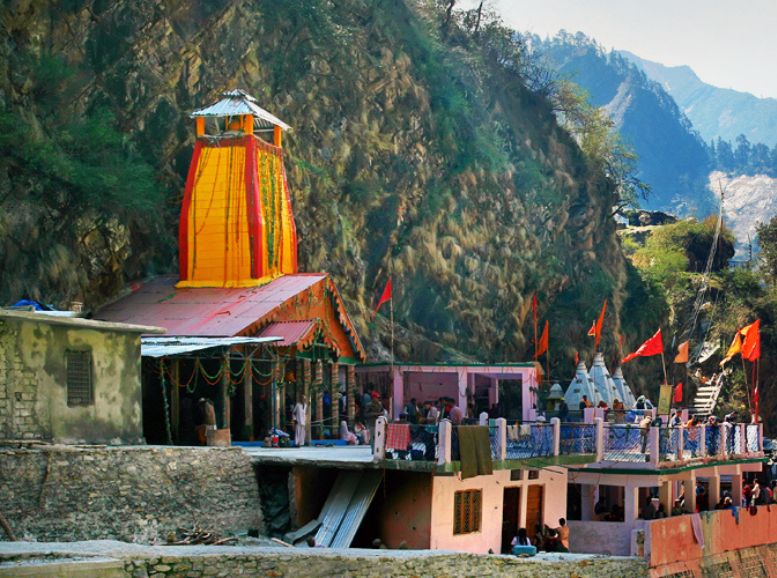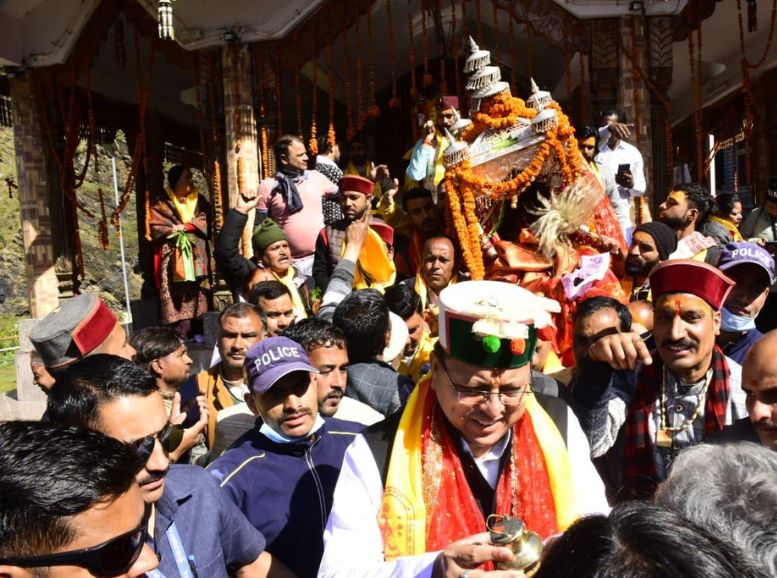In the heart of Uttarakhand’s majestic Himalayas, Yamunotri beckons with spiritual significance and breathtaking beauty. The source of the sacred Yamuna River, this tranquil haven draws pilgrims, trekkers, and nature lovers alike.
Part of the revered Char Dham pilgrimage circuit, Yamunotri holds a special place for devotees seeking blessings and purification amidst its pristine surroundings. Beyond its religious importance, Yamunotri stuns visitors with its landscapes – lush forests, cascading waterfalls, and snow-capped peaks that scrape the sky.
Join us on a virtual exploration of Yamunotri’s wonders. We’ll delve into its rich history, spiritual legacy, and the natural splendor that defines this enchanting destination, where peace and spirituality meet in the Himalayan embrace.
How to reach:
- Air & Train: Dehradun (approx. 210 km) offers the nearest airport (Jolly Grant) and railway station. Taxis and buses connect you for the onward 7-8 hour journey.
- Road: Explore a scenic drive or hire a taxi from Dehradun, Rishikesh, or Haridwar. Regular bus services are also available from these towns.
- Trekking (Moderate Difficulty): For the adventurous, a 14 km trek awaits! Starting from Hanuman Chatti (accessible by road), this route rewards with stunning Himalayan views. Be prepared for a moderately challenging hike.
Best time to visit:
- Summer (May-June):
- Pleasant weather (10°C to 20°C) with melting snow eases travel and temple access.
- Pilgrimage season brings larger crowds.
- Early Autumn (September-October):
- Clear, mild weather ideal for outdoor activities and sightseeing.
- Lush greenery and blooming flowers enhance the scenic beauty.
- Pilgrimage season continues until Diwali (temple closure).
Must-see sights:
Discovering the Sacred Source:

The Himalayan town of Yamunotri isn’t just a pilgrimage site; it’s a wellspring of Hindu mythology. Here, the revered Yamuna River, a goddess in Indian culture, begins its journey. Reaching the Yamunotri temple transcends a physical trek, becoming a spiritual odyssey. Devotees navigate rugged landscapes, dense forests, and gushing streams, each step imbued with purpose as they approach the holy shrine.
The Sacred Temple of Yamunotri:

Perched at a staggering 3,293 meters, the Yamunotri Temple embodies the spirit of devotion. Built in the 19th century by Maharani Guleria of Jaipur, it’s dedicated to Goddess Yamuna. A black marble idol of the deity resides within, adorned with devotees’ offerings and vibrant garlands. The temple’s serenity, punctuated by the melodious chants of prayers, creates a truly divine atmosphere.
Spiritual Significance and Rituals:

A visit to Yamunotri transcends a pilgrimage; it’s a chance for spiritual renewal and purification. Devotees brave the icy waters of the Yamuna River for a holy dip, believing it washes away sins and grants blessings. Rituals like offering prayers, lighting diyas (oil lamps), and reciting hymns become expressions of deep reverence for the goddess and the sacredness of this place.
Natural Splendor and Trekking Trails:

Yamunotri’s charm extends beyond its spiritual significance. Nature lovers and adventure seekers find paradise here. Lush meadows painted with vibrant alpine flowers unfurl amidst towering Himalayan peaks, offering breathtaking panoramas at every turn. Trekking trails wind through this captivating landscape, leading to Saptarishi Kund, Kharsali, and other captivating destinations. Immersing yourself in the untamed beauty of the Himalayas becomes an unforgettable experience.
Local experiences:
Unveiling Local Wisdom: Engage in heart-to-heart conversations with priests, shopkeepers, and residents. Learn about their way of life, cherished beliefs, and age-old customs that bind the community together.
A Culinary Adventure: Embark on a delicious journey by indulging in traditional dishes at local eateries and roadside stalls. Savor the hearty combination of rajma chawal (kidney beans with rice), the flavorful aloo ke gutke (potato dumplings), and freshly baked rotis (flatbreads) – a true taste of Gorakhpur’s culinary heritage.
Immerse in the Rhythm: Witness vibrant folk performances that capture the essence of Gorakhpur’s culture. Be mesmerized by the energetic steps of the Chholiya dance and the soul-stirring melodies of devotional songs performed by local musicians.
A Walk Through Time: Stroll through narrow lanes lined with traditional houses, each with a story to tell. Observe local artisans practicing their crafts, using techniques passed down through generations. Immerse yourself in the rustic charm of village life, a world away from the hustle and bustle of the city.
Giving Back: Become part of the community by volunteering for cleanliness drives. Contribute your time and skills to local schools or healthcare centers, making a positive impact on the lives of others. You can also participate in environmental conservation efforts, ensuring a sustainable future for this beautiful region.
Travel tips:
Forewarned is Forearmed: Research weather patterns, road conditions, and available accommodation in advance. This ensures a smooth and enjoyable trekking experience.
Pack for Adventure: Pack light layers for varying temperatures, sturdy trekking shoes for uneven terrain, sunscreen and sunglasses for sun protection, and a raincoat or umbrella for potential downpours.
Stay Hydrated: Always carry ample water and make a conscious effort to drink frequently, especially at higher altitudes where dehydration can set in quickly.
Acclimatization is Key: Allow yourself time to adjust to the higher altitude gradually. This helps to minimize the risk of altitude sickness and ensures a more comfortable trek.
Respect the Culture: Be mindful of local customs regarding clothing, photography, and behavior within sacred spaces like temples.
Pack Light, Hike Strong: Pack only essential items for your trek. Carry a small backpack with water, snacks, and a first-aid kit for minor emergencies.
Embrace the Challenge: Begin your trek early to avoid the midday heat. Pace yourself while walking, and be prepared for potentially rugged terrain and unpredictable weather changes.
Stay Connected: Inform trusted individuals about your planned route. Carry a fully charged phone and a power bank to stay connected whenever possible.
Tread Lightly: Leave no trace behind! Dispose of waste responsibly, avoid littering, and embrace eco-friendly practices to preserve the natural beauty of the region.
Conclusion
A pilgrimage to Yamunotri in Uttarakhand promises a transformative experience, enriching your soul with spirituality, breathtaking Himalayan beauty, and vibrant local culture. Prepare for a smooth and respectful visit by planning ahead with a trusted tour guide website like Xplro.com. Then, embrace the serene temple, majestic mountains, and warm interactions with locals. Whether seeking solace, adventure, or connection with nature, Yamunotri welcomes you on a journey of self-discovery. Delve into the local essence, find peace and inspiration, and create lifelong memories. With careful planning, an open mind, and reverence, Yamunotri will leave an enduring mark, long after you bid farewell to this sacred Himalayan abode.
FAQ
- What is Yamunotri?
- Yamunotri is a revered pilgrimage site located in the Uttarkashi district of Uttarakhand, India, known as the origin of the Yamuna River.
- How can I reach Yamunotri?
- Access to Yamunotri is primarily by road from major cities like Dehradun, Rishikesh, and Haridwar, followed by a trek from Hanuman Chatti.
- When is the best time to visit Yamunotri?
- The optimal times to visit Yamunotri are during the summer months (May to June) and early autumn (September to October) when the weather is pleasant and the temple accessible.
- What is the typical weather in Yamunotri?
- Yamunotri experiences varying temperatures, with summers being moderate (10°C to 20°C) and winters being extremely cold with heavy snowfall.
- Is trekking necessary to access Yamunotri?
- Yes, trekking is essential to reach Yamunotri from Hanuman Chatti, covering approximately 14 kilometers, which takes around 5-6 hours to complete.
- Are lodging options available near Yamunotri?
- Accommodation options are accessible in Hanuman Chatti, Janki Chatti, and nearby villages, including guesthouses, lodges, and tented camps.
- What are the main attractions at Yamunotri?
- The prominent attractions in Yamunotri include the Yamunotri Temple, Surya Kund, Divya Shila, and trekking routes to destinations like Saptarishi Kund and Kharsali.
- Are medical facilities accessible in Yamunotri?
- Basic medical facilities are available in Hanuman Chatti and Janki Chatti, but visitors are advised to carry necessary medications and a first-aid kit.
- Is Yamunotri accessible during the monsoon season?
- It’s not recommended to visit Yamunotri during the monsoon season (July to August) due to heavy rainfall, landslides, and slippery trekking paths.
- What attire is suitable for visiting Yamunotri?
- Wear comfortable trekking attire appropriate for the prevailing weather conditions, including warm layers, trekking shoes, and rain gear during the monsoon.
- Are there any regulations at the Yamunotri Temple?
- Visitors must comply with dress codes, photography restrictions, and temple etiquette outlined by the temple authorities.
- Is solo travel to Yamunotri safe?
- While solo travel is possible, it’s advisable to travel with a group or hire a local guide for safety and assistance, particularly during trekking portions of the journey.






